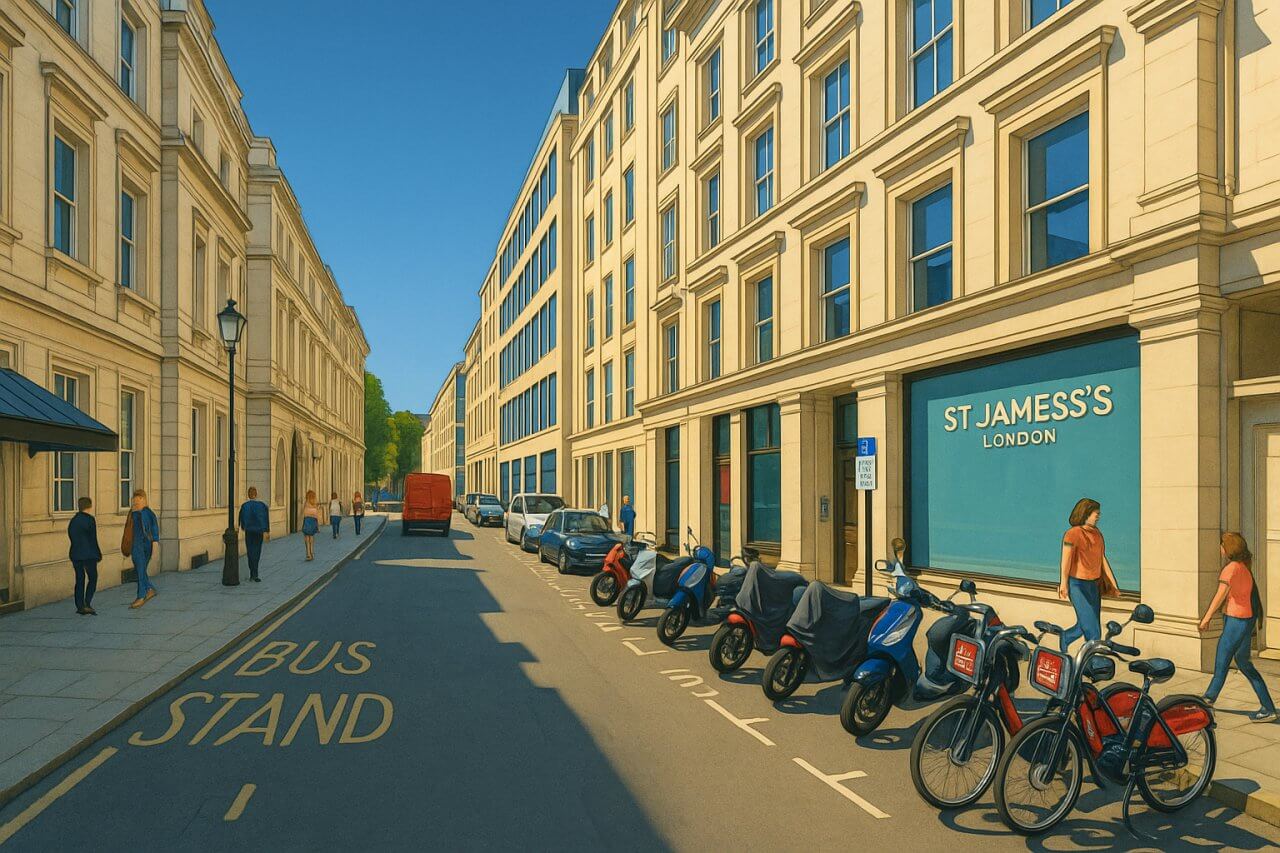
Charles II Street, London
Charles II Street is a short yet historically rich road located in the heart of Westminster, London. It runs one-way from east to west, linking the bustling thoroughfare of Haymarket with the stately St James’s Square. The road is intersected by Waterloo Place and Regent Street St James’s, placing it within one of the capital’s most distinguished and architecturally refined districts.
Location and Layout
Charles II Street measures approximately 150 metres (492 feet) in length and accommodates one-way traffic heading westward. It provides a key local connection within the St James’s area, forming a small but integral part of central London's elegant street grid. The street gently slopes uphill from Haymarket and terminates at St James’s Square, one of the finest Georgian squares in London.
History and Naming
Charles II Street dates back to the late 17th century and was part of the extensive urban development that followed the Restoration of the Monarchy in 1660. The street is named in honour of King Charles II, whose return from exile marked a renewed period of building and royal patronage in London.
The name Charles II Street is pronounced CHAR-lz the second street, and in the International Phonetic Alphabet, it is rendered as /ˈtʃɑːrlz ðə ˈsɛkənd striːt/  . Its naming reflects a time when St James’s was being transformed into a fashionable district of royal palaces, gentlemen’s clubs, and elegant townhouses.
. Its naming reflects a time when St James’s was being transformed into a fashionable district of royal palaces, gentlemen’s clubs, and elegant townhouses.
Character and Atmosphere
The character of Charles II Street is quintessentially St James’s: refined, quiet, and steeped in tradition. Despite its proximity to the lively Haymarket and Piccadilly Circus, the street maintains a serene and almost exclusive atmosphere. Its buildings, many of which are preserved period properties, lend it a sense of gravitas that contrasts with the surrounding commercial energy.
The street is primarily used for access to private residences, clubs, offices, and some cultural institutions. The architectural style is classically Georgian, with a number of modern refurbishments that preserve the original façades.
Notable Sights and Nearby Attractions
While Charles II Street itself is relatively modest in length, it is surrounded by significant sights:
- St James’s Square: Just steps away, this historic garden square is home to exclusive clubs and elegant buildings.
- The Institute of Contemporary Arts (ICA): Located at the junction with The Mall and Waterloo Place, the ICA offers avant-garde exhibitions and events.
- Her Majesty's Theatre: On nearby Haymarket, a celebrated West End theatre best known for hosting "The Phantom of the Opera."
- Waterloo Place: A stately open space lined with statues and grand facades, linking the Mall to Regent Street St James’s.
Real Estate and Property Information
Property on Charles II Street is among the most valuable in central London, reflecting its prestigious St James’s location. As of Q2 2025, commercial office space on the street averages approximately £2,250 per sq ft (£24,220 per sq m)1. Residential properties are rarer and typically occupy upper floors or are adjacent on nearby streets. Flats or maisonettes in this area often exceed 1,500 sq ft (139 sq m) and sell for upwards of £4 million, depending on the specific features and condition1.
This high value places Charles II Street among the top-tier property markets in London, particularly favoured by international investors and corporate occupants.
Transport and Connectivity
Nearest Underground Stations
- Piccadilly Circus (Bakerloo and Piccadilly lines): About 4 minutes’ walk to the north.
- Green Park (Jubilee, Piccadilly, and Victoria lines): Roughly 7 minutes’ walk to the west.
- Charing Cross (Bakerloo and Northern lines, and National Rail): Approximately 10 minutes' walk southeast.
Nearby Bus Stops
Frequent bus services operate along Haymarket and Regent Street St James’s. The closest stops are:
- Charles II Street / Haymarket: Served by routes 6, 12, 23, 88, 139, and 159.
- Regent Street St James’s: Served by routes 3, 12, 88, and 159.
Fun Fact
Although today it is a quiet road, Charles II Street played a more colourful role in the 18th century. It was historically home to a number of fashionable coffee houses and clubs frequented by intellectuals, politicians, and artists. One such venue was known for hosting early meetings of the Royal Society of Arts before it moved to larger premises.
Quick Facts
- Location: City of Westminster, central London
- Direction: One-way, westbound from Haymarket to St James’s Square
- Length: Approximately 150 metres (492 feet)
- Named after: King Charles II, following the Restoration in 1660
- Pronunciation: CHAR-lz the second street /ˈtʃɑːrlz ðə ˈsɛkənd striːt/
- Nearby landmarks: St James’s Square, ICA, Waterloo Place, Her Majesty’s Theatre
- Property values: Up to £2,250 per sq ft (£24,220 per sq m) for office space as of Q2 2025
- Nearest Tube stations: Piccadilly Circus, Green Park, Charing Cross
- Nearby bus routes: 3, 6, 12, 23, 88, 139, 159
- Historical fact: Once home to clubs and coffee houses visited by Enlightenment thinkers
References
Map of Charles II Street, London

Painting of Charles II Street, London (View image in full size)